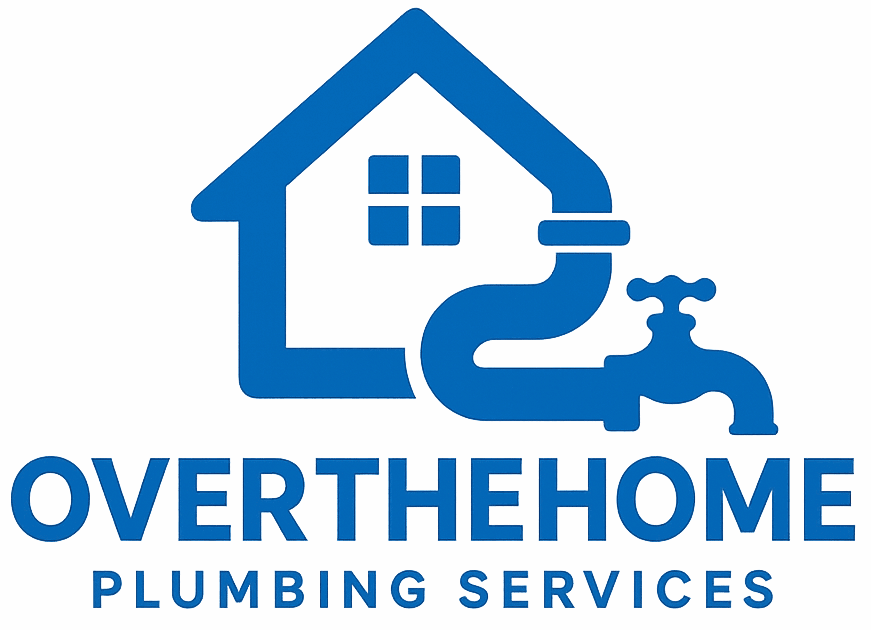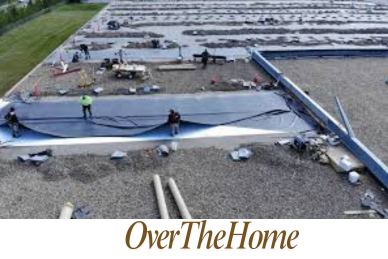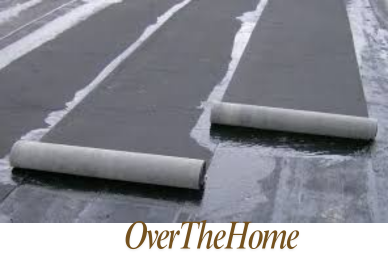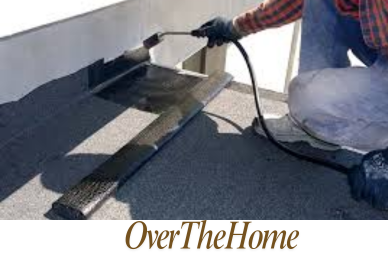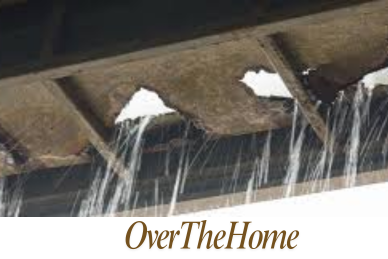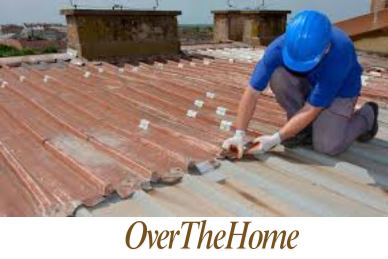Slate vs Shingle Roof | Which One is Right for You?
Your roof is one of the most critical components of your home, protecting you from the elements and contributing significantly to your property’s overall value and curb appeal. The roofing material you choose will not only affect the appearance of your home but also its durability, maintenance requirements, and energy efficiency. Slate and shingle roofs are two popular options, each with its own distinct characteristics.
Both materials have their unique advantages and drawbacks, and the choice ultimately depends on factors such as budget, aesthetics, and long-term goals. In this article, we’ll talk about the key differences between slate and shingle roofs, helping you make an informed decision for your home.
Material Properties
Slate Roofs
Slate is a naturally occurring metamorphic rock that has been used as a roofing material for centuries. It is quarried from the earth and then split into thin, durable tiles. Slate roofs are available in a variety of colors, including shades of gray, green, purple, and even red, depending on the quarry location and mineral composition.
There are two main types of slate roofs:
- Quarried Slate: Newly quarried slate tiles, often more consistent in color and thickness.
- Reclaimed Slate: Salvaged from older buildings, reclaimed slate tiles offer a unique, weathered look and contribute to sustainable building practices.
Shingle Roofs
Shingles, on the other hand, are manufactured roofing materials that come in a variety of types, including:
- Asphalt Shingles: The most common and affordable option, made of a fiberglass or organic mat coated with asphalt and mineral granules.
- Metal Shingles: Durable and fire-resistant, metal shingles are available in various styles and can mimic the look of slate, tile, or wood shakes.
- Wood Shingles: A natural and eco-friendly option, wood shingles can provide a rustic, classic look but require more maintenance.
- Slate Composite Shingles: A blend of recycled materials and synthetic components designed to mimic the appearance of slate at a lower cost.
Both slate and shingles offer a wide range of colors and styles to complement various architectural designs.
Cost Comparison
One of the most significant factors to consider when choosing between slate and shingle roofs is the cost. Here’s a breakdown of the typical costs associated with each option:
| Cost Factor | Slate Roof | Shingle Roof |
| Materials | $800 – $1,800+ per square (100 sq.ft.) | $100 – $400 per square |
| Installation | $1,000 – $3,000+ per square | $200 – $600 per square |
| Total Upfront Cost | $1,800 – $4,800+ per square | $300 – $1,000 per square |
As you can see, slate roofs have a significantly higher upfront cost due to the premium materials and specialized installation required. However, it’s important to consider the long-term costs as well.
Slate roofs have an exceptionally long lifespan. Shingle roofs, on the other hand, have a much shorter lifespan. This means that while shingles may be more affordable initially, the cost of periodic replacements can add up over time.
Additionally, slate roofs may require structural reinforcement due to their substantial weight, further increasing the overall installation cost.
Durability and Lifespan
One of the most significant advantages of slate roofs is their exceptional durability and longevity. With proper installation and maintenance, a slate roof can easily last 75-200 years or more, making it a truly generational investment.
On the other hand, shingle roofs have a much shorter lifespan, with asphalt shingles typically lasting 15-30 years before requiring replacement. Higher-quality shingles, such as metal or slate composite, can last longer, but still fall short of the longevity offered by slate.
The lifespan of any roof is influenced by various factors, including:
- Weather conditions (extreme temperatures, heavy rain, snow, or hail)
- Proper installation and maintenance
- Quality of materials used
It’s important to note that many slate and shingle manufacturers offer warranties to protect against defects or premature failure. These warranties can range from 20 years to lifetime coverage, depending on the product and manufacturer.
Weight Considerations
Slate is a dense, heavy material, with a typical slate roof weighing between 800-1,500 pounds per square (100 sq.ft.). This substantial weight puts added stress on the underlying roof structure and may require reinforcement or additional support beams during installation.
In contrast, shingle roofs are significantly lighter, with asphalt shingles weighing around 200-400 pounds per square. This reduced weight often eliminates the need for structural reinforcement, simplifying the installation process.
Fire Resistance
When it comes to fire resistance, slate roofs are unmatched. As a non-combustible material, slate is entirely fire-resistant and can protect your home from external fire threats, such as wildfires or burning embers.
Shingle roofs, on the other hand, have varying levels of fire resistance depending on the material:
- Asphalt Shingles: Class A fire rating (highest rating for residential roofs), but can still be vulnerable to direct flame exposure or intense heat.
- Metal Shingles: Non-combustible and highly fire-resistant, making them an excellent choice for areas prone to wildfires.
- Wood Shingles: Relatively low fire resistance, requiring additional treatments or coatings to improve their rating.
In areas with a high risk of wildfires or strict fire codes, a slate roof may be the safer and more code-compliant option.
Aesthetics and Curb Appeal
Aesthetics play a significant role in the overall appeal and value of a home, and both slate and shingle roofs offer unique visual appeal.
Slate roofs are renowned for their classic beauty and timeless look. The natural variations in color, texture, and thickness of slate tiles create a distinct and elegant appearance that complements many architectural styles, from traditional to modern. Additionally, a well-maintained slate roof can add significant curb appeal and potentially increase a home’s resale value.
Shingle roofs, on the other hand, offer a wide variety of styles and colors to choose from, allowing homeowners to customize the look of their homes to suit their personal preferences and architectural style. Asphalt shingles are available in a range of colors, from classic blacks and grays to vibrant reds and blues. Metal shingles can mimic the appearance of slate, tile, or wood shakes, providing additional aesthetic options.
Environmental Impact
As a natural and sustainable material, slate roofs have a relatively low environmental impact. Slate is a durable, long-lasting material that requires minimal maintenance and can often be recycled or repurposed at the end of its lifespan.
In contrast, the production of shingles, particularly asphalt shingles, can have a more significant environmental footprint. The manufacturing process involves the use of petroleum-based products and can contribute to greenhouse gas emissions.
Wood shingles are a more eco-friendly option among shingle roofs, as they are made from a renewable resource and can be sustainably sourced. However, they may require more frequent treatments or replacements, which can impact their overall environmental footprint.
At the end of their lifespan, some shingle materials, such as metal or slate composite, can be recycled, while others, like asphalt shingles, often end up in landfills.
Maintenance Requirements
Slate roofs are known for their low maintenance requirements. Once properly installed, a slate roof typically requires minimal upkeep beyond occasional cleaning and inspection for any loose or damaged tiles that may need repair or replacement.
Shingle roofs, on the other hand, often require more regular maintenance:
- Asphalt Shingles: Periodic inspections for cracking, curling, or missing shingles, as well as moss or algae growth, which can lead to premature deterioration. Shingles may also need to be replaced every 15-30 years.
- Metal Shingles: Relatively low maintenance, but may require occasional cleaning and touch-up of any scratches or dents to prevent corrosion.
- Wood Shingles: Regular maintenance is essential, including cleaning, treating with preservatives, and potentially replacing damaged or rotted shingles over time.
The maintenance requirements of shingle roofs can translate into higher long-term costs, as regular inspections, repairs, and eventual replacement will be necessary throughout the life of the roof.
Installation Process
The installation process for slate and shingle roofs differs significantly in terms of complexity and required expertise.
Slate roof installation is a skilled trade that requires experienced professionals. The tiles must be carefully cut and laid in an overlapping pattern, with each tile individually secured to the roof deck. This intricate process is labor-intensive and time-consuming, contributing to the higher installation costs associated with slate roofs.
In contrast, shingle roofs are generally easier and faster to install, making them a more practical option for many homeowners. Asphalt shingles, in particular, are a common choice for their straightforward installation process, which can often be completed by general roofing contractors.
Local Climate Considerations
The local climate and weather conditions in your area should also be a factor when choosing between slate and shingle roofs.
Slate roofs are highly durable and can withstand a wide range of weather conditions, including extreme temperatures, heavy rain, snow, and even hail. Their dense, non-porous nature makes them resistant to moisture penetration and freeze-thaw cycles, which can be particularly damaging to other roofing materials.
Shingle roofs, particularly asphalt shingles, may be more susceptible to damage from severe weather events, such as hailstorms or high winds. In areas with frequent freeze-thaw cycles, the expansion and contraction of shingles can lead to premature aging and deterioration.
Sound Insulation
One often overlooked aspect of roofing materials is their ability to provide sound insulation. Slate roofs are known for their excellent sound-dampening properties, particularly during heavy rain or hail storms.
The density and thickness of slate tiles can significantly reduce the noise levels inside your home, creating a more peaceful and quiet living environment. This can be especially beneficial for homeowners living in areas with frequent heavy rainfall or intense storms.
Shingle roofs, on the other hand, generally offer less sound insulation than slate. While the exact level of noise reduction varies depending on the type and quality of shingles, they are typically not as effective at dampening external sounds as slate roofs.
The Verdict
If you prioritize longevity, durability, and classic elegance, a slate roof is the superior choice, lasting 75-200+ years with minimal maintenance. Its natural, non-combustible material offers excellent fire resistance and weather resilience. While pricier upfront, a slate roof’s exceptional lifespan can provide better long-term value and potentially increase resale value.
However, if budget is the primary concern, a shingle roof (asphalt, metal, or wood) offers a more affordable upfront cost with various style options, albeit with a shorter lifespan of 15-30 years for asphalt. Ultimately, consider your priorities – splurge for slate’s generational investment, or opt for shingles’ budget-friendly solution – and consult roofing experts for tailored advice.
Final Words
Ultimately, the decision between a slate or shingle roof will depend on your priorities, budget, and long-term goals for your home. It’s essential to consult with experienced roofing professionals who can assess your specific needs and provide expert guidance on the most suitable option.
By carefully considering the factors outlined in this article, you can make an informed decision that not only enhances the aesthetic appeal of your home but also ensures long-lasting protection and value for years to come.
